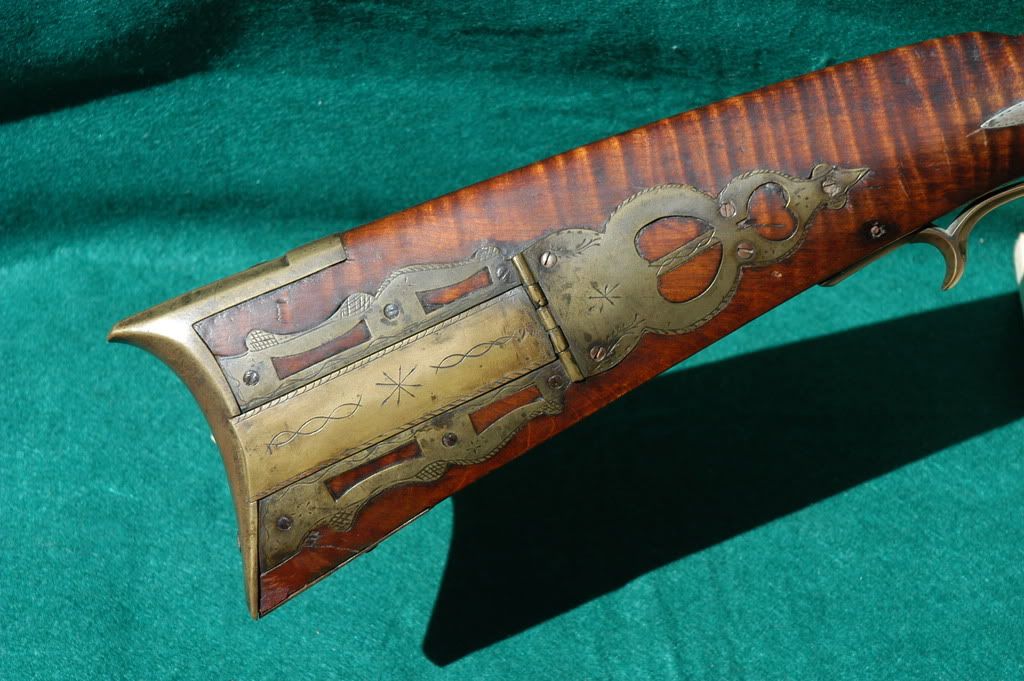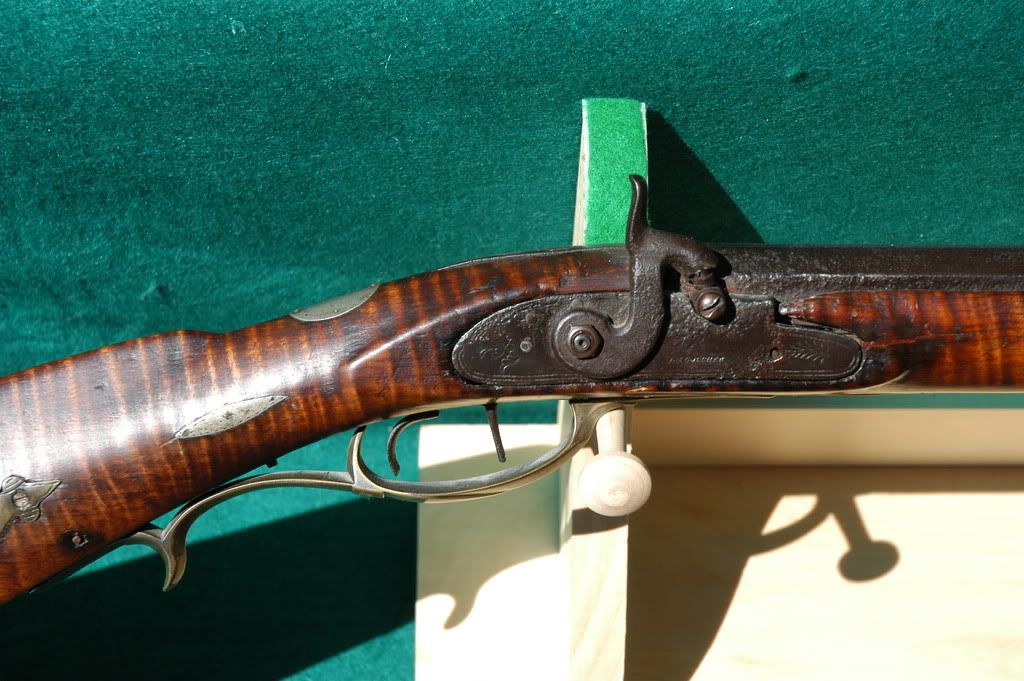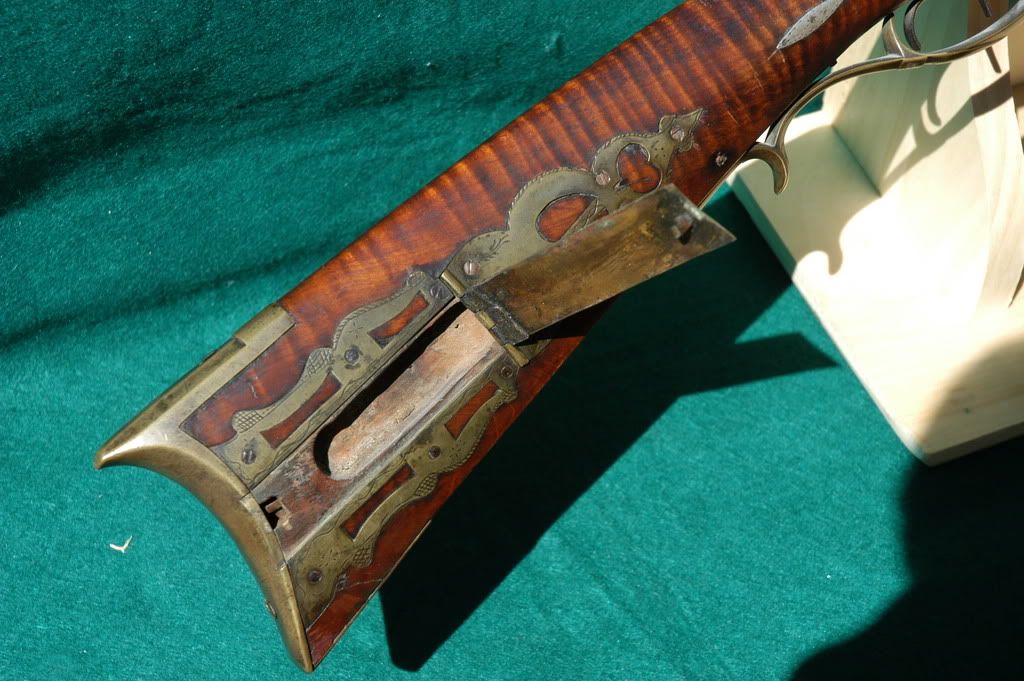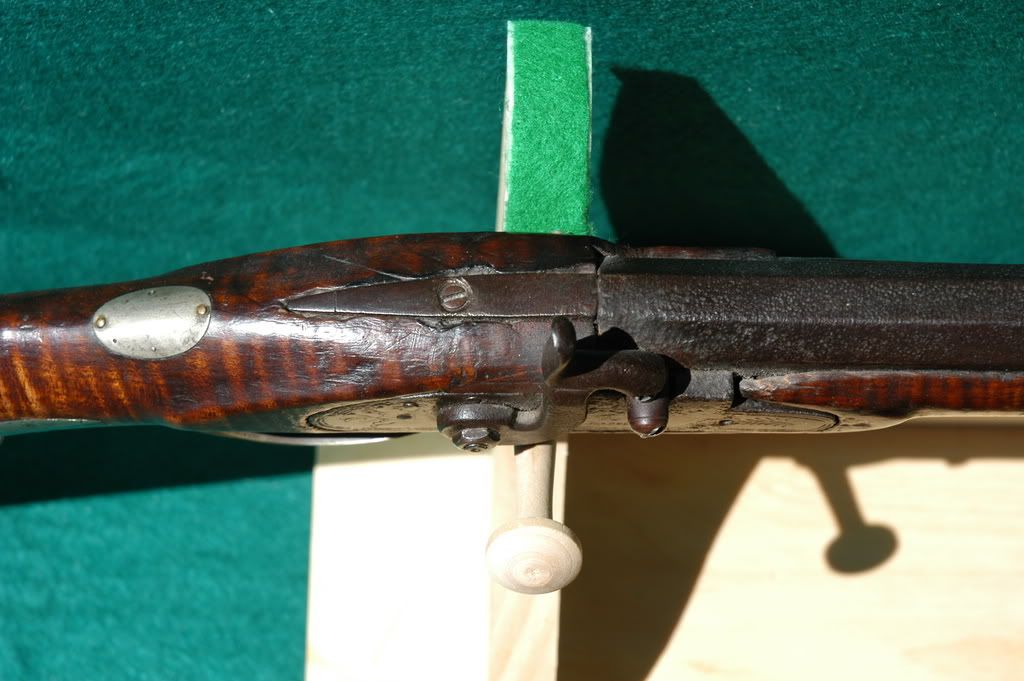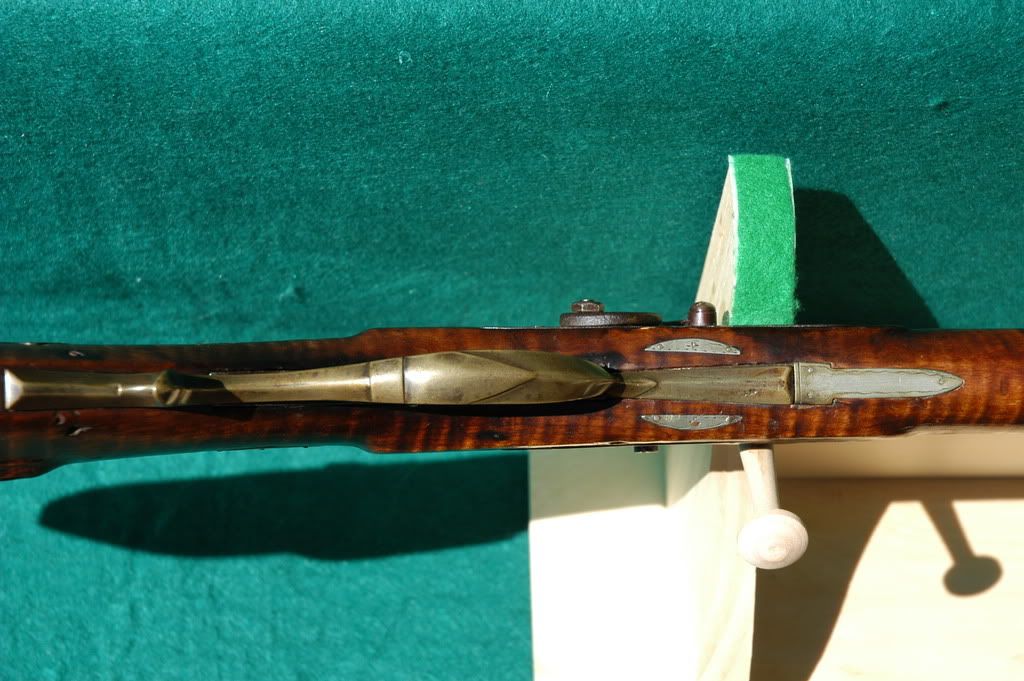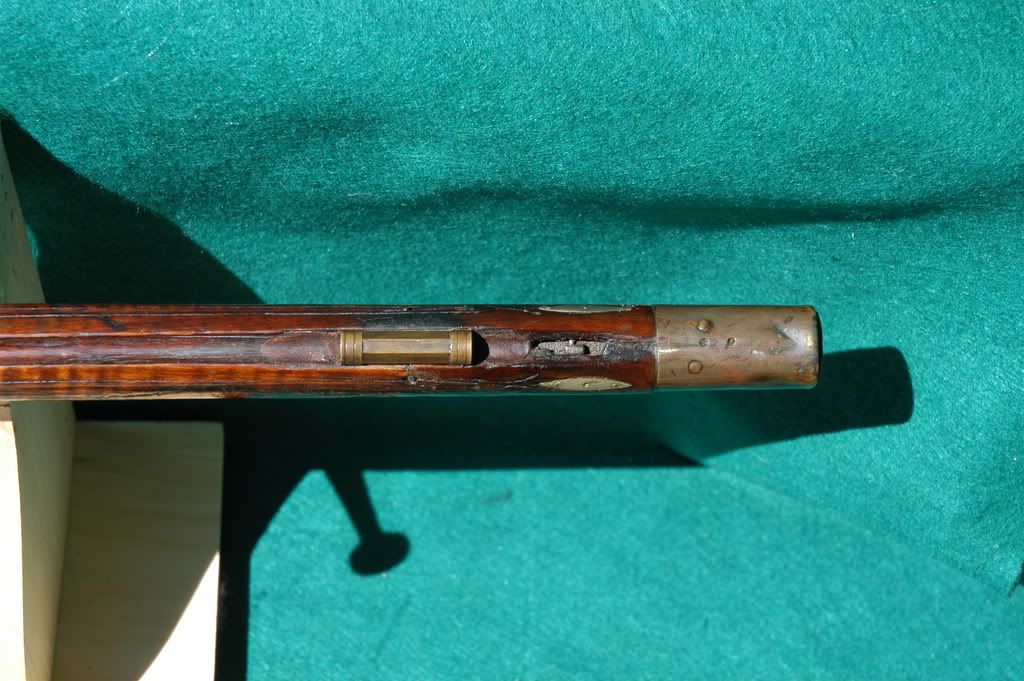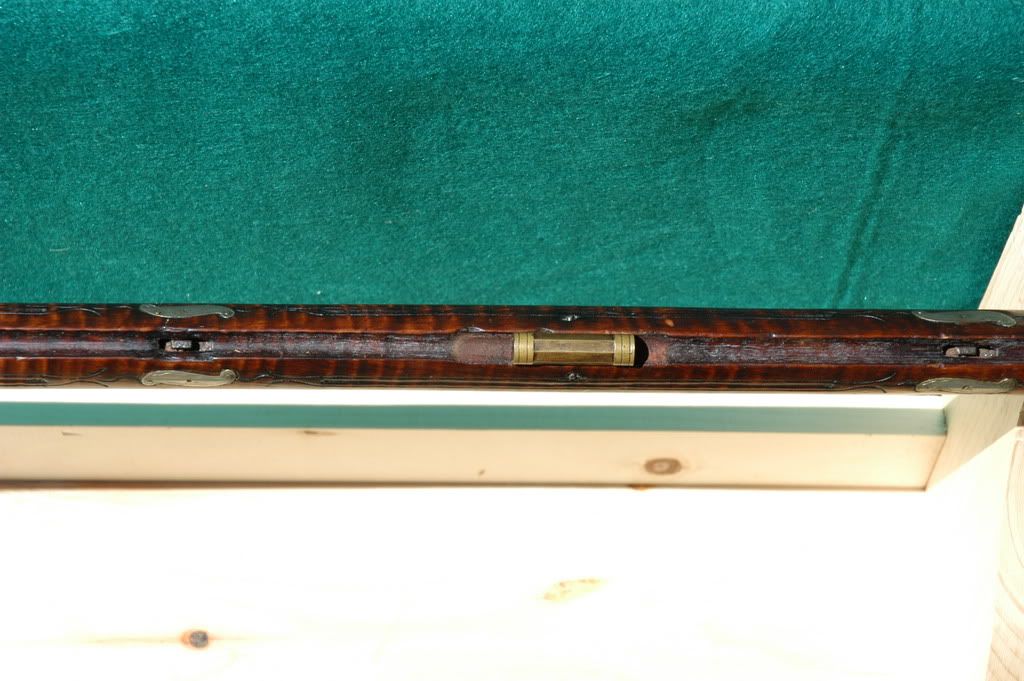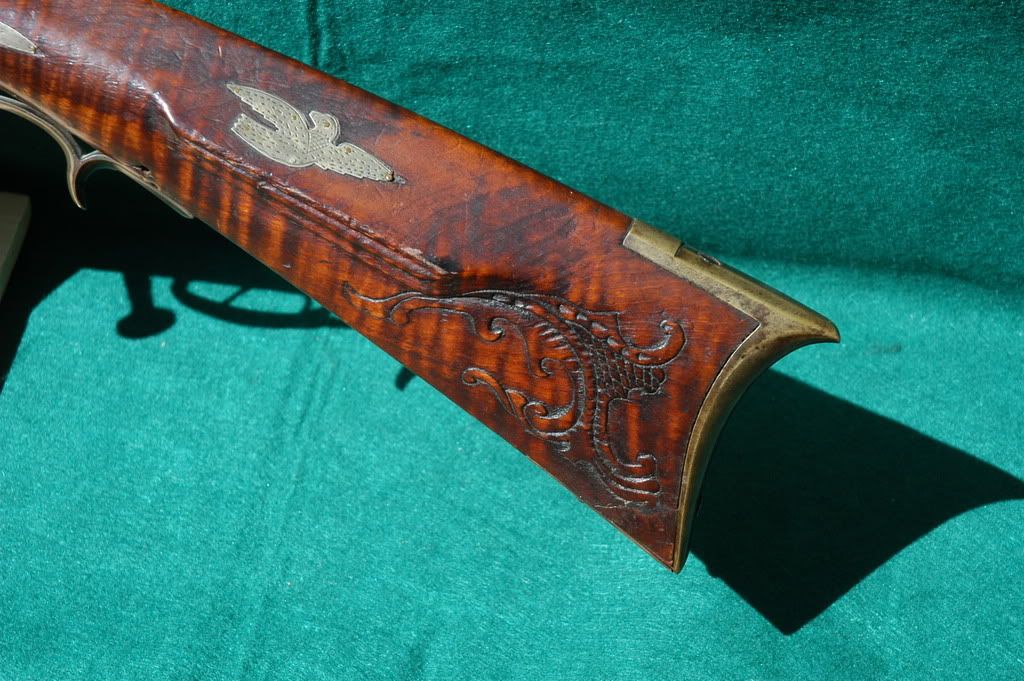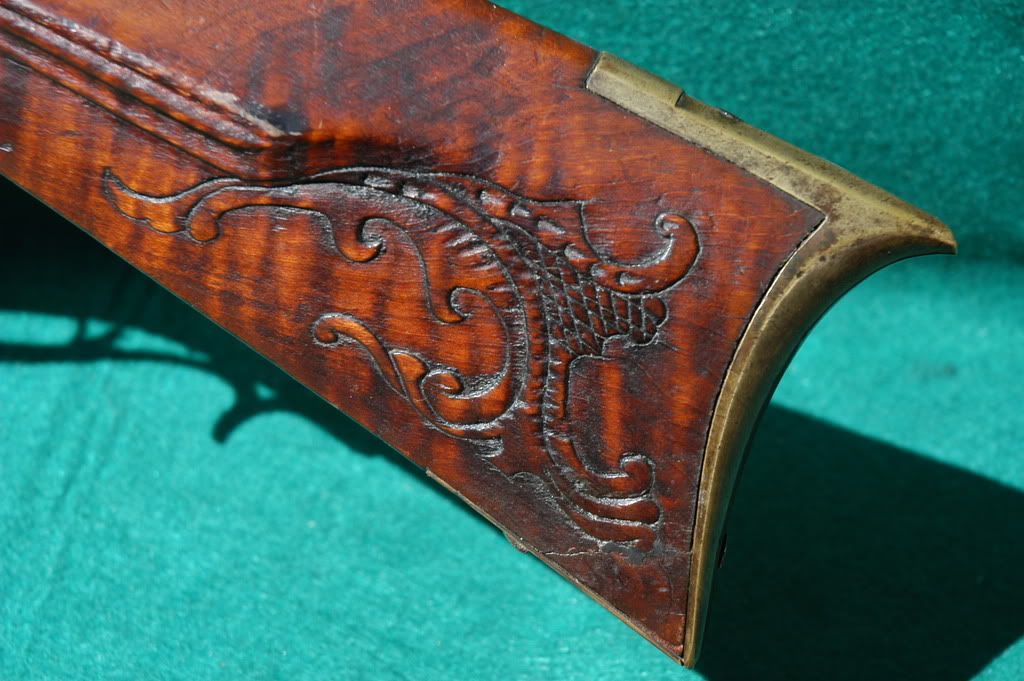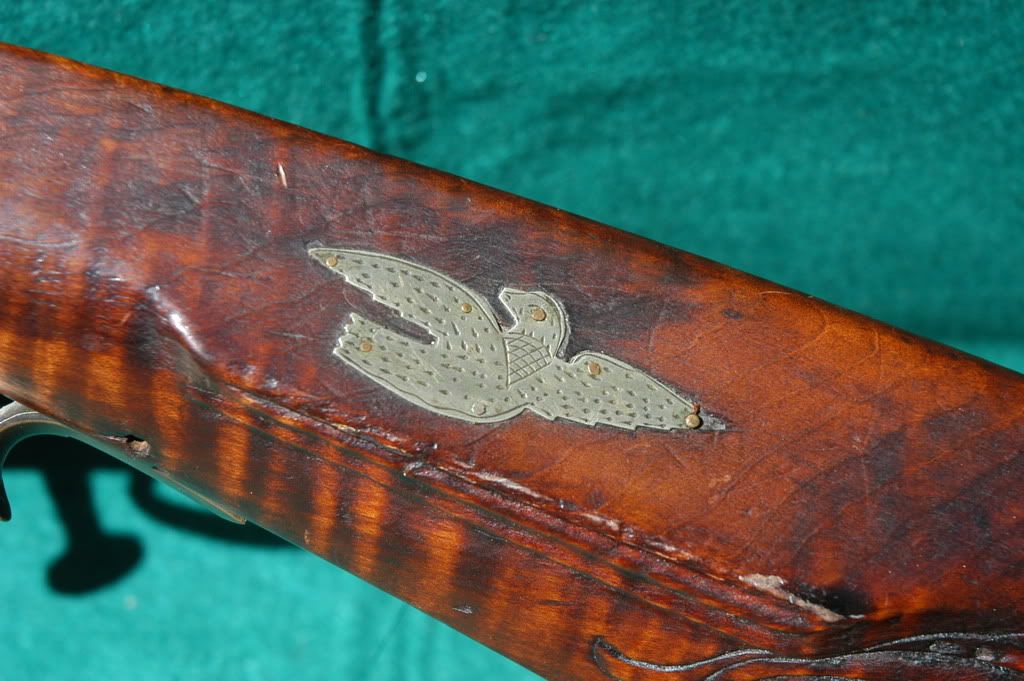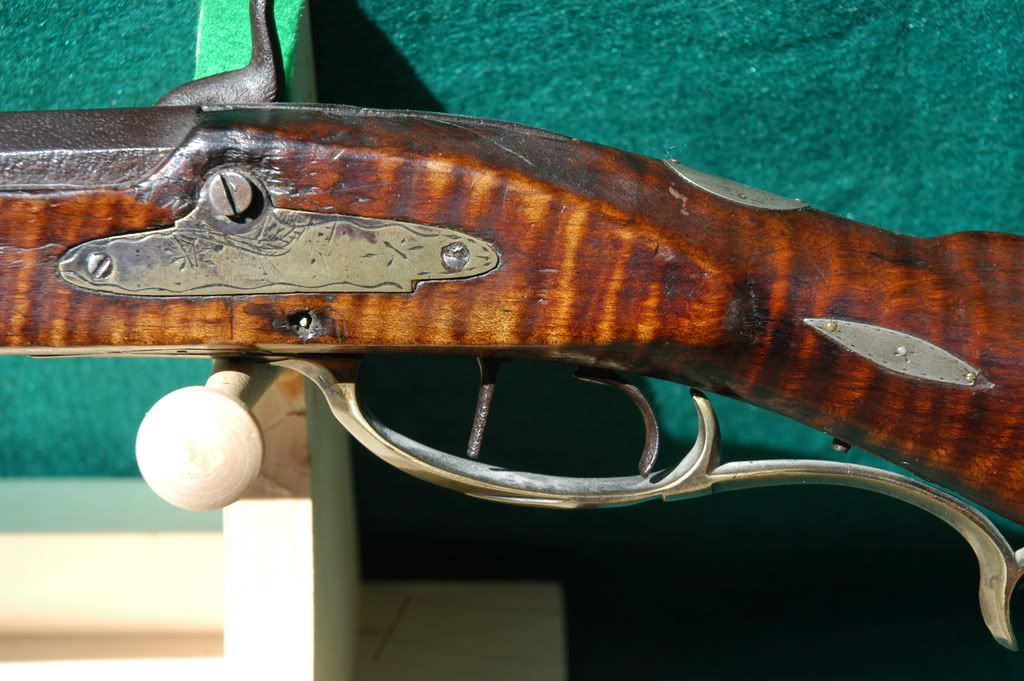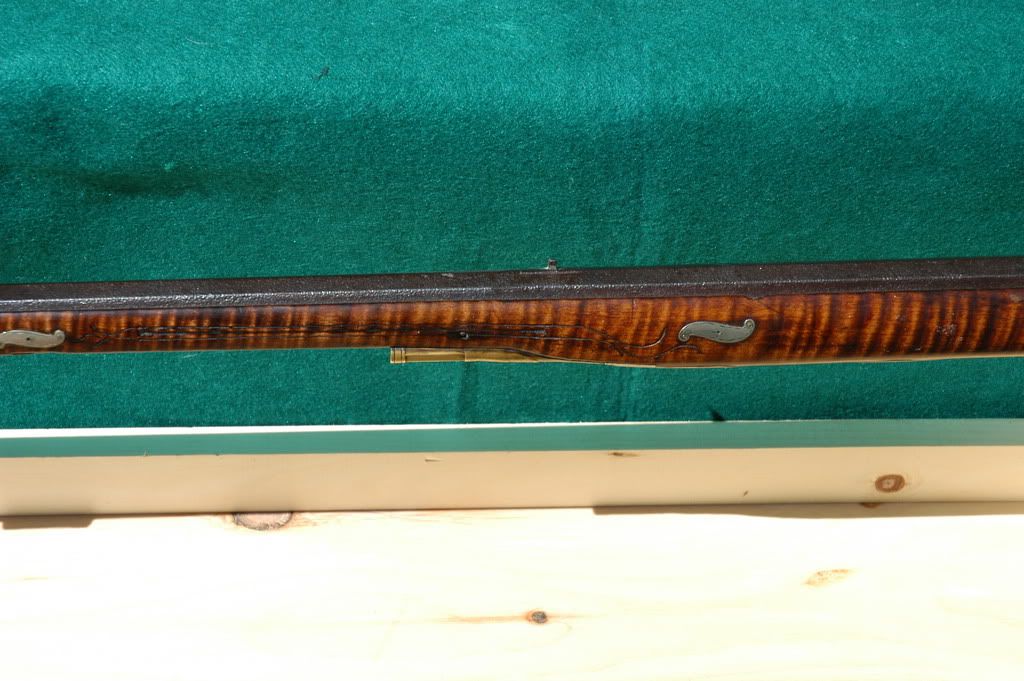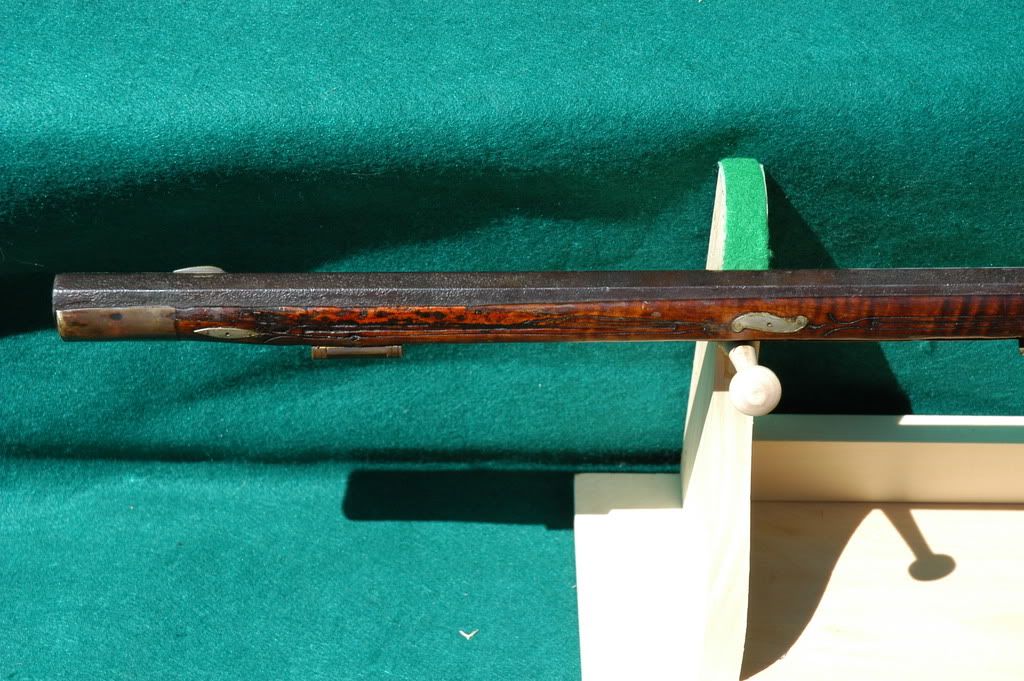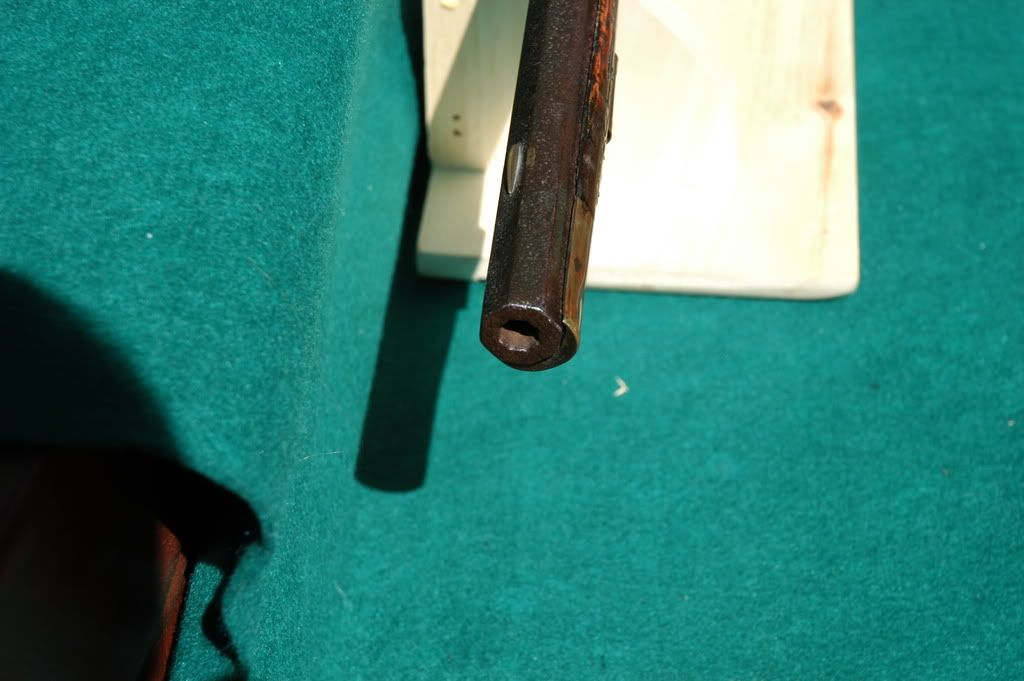Attributed gun to the Mier Family of Gunsmiths. The gun is not signed but the barrel is severely oxidized. The identification is made primarily on the basis of the style of the carving. The barrel is rifles, about 40 caliber and 42.5 inches long. The lock is likely converted. There is no restoration apparent.
Comments:
This is an interesting rifle. For years it was thought to be the work of Ohio/Indiana gunsmith George Wareham, but it never looked quite right for his work. For one thing, the comb was too long and low, and for another, the carving had no relationship to the carving on Jacob Paulmer's better rifles, and he was Wareham's instructor.
We need to be careful here, since there are several Mier gunmakers, Jacob the father and his sons Samuel, William and John. I think we should try to avoid generalizations such as "it looks like" and try instead to point out specific reasons, or details, in areas such as the stock architecture, furniture style, box shape, engraving, carving, etc., to help pin down the most likely maker, or attribution. Presuming this is a Mier product, that can help us point in the direction of a specific Mier.... since all had little differences in their details.
A comparison of known Mier rifles to this one tends to indicate the most probably maker is probably the father, Jacob Mier. His carving is the closest to the pattern (and details within the pattern) on this rifle, whereas Samuel's work varies more in the flowing tendrils at the termination of scrolls, and he used little punched dots, or dimples, in his scroll heads not seen in Jacob's work, and not seen in this rifle. Jacob's work is simpler than Samuel's, and earlier. This rifle does not appear to be by Samuel, in my opinion. The somewhat simplistic, or perhaps slightly crude, shaping of the patchbox is another detail that leans the gun toward Jacob. This box, and Jacob's known boxes, both use a very similar hinge construction, and both use some of the same engraved details. These details include the 8-pointed star burst, and the soft, wavy borders along the patchbox lid and side leaves. Also important for comparison purposes is the hashed outer edge borders on this rifle, which can be found on the Jacob Mier patchboxes, altho the hashed borders are not as complete around the edges on his couple of known guns. The trigger guard on this rifle appears closer to the ones used by Jacob, and the butt plate is closer to Jacob's, specificially with its slightly raised front ridge on the top extension (from filed flats behind the ridge), whereas Samuel's are smooth across the top.
This is a rifle that appears closely related to the Mier family of Somerset Co., PA, and among those several gunmakers, it appears to most closely resemble Jacob Mier's work. Since there are not other gunmakers using this major butt carving pattern, or the somewhat crudely cut patchboxes with simple engraving including the several above mentioned details, we are probably pretty safe in thinking it's a Mier product. I think we can rule out Samuel Mier, since his work was superior but later (more elaborate inlay work, shorter barrels, etc.), but I haven't seen guns by either son William or John. Jacob and Samuel were listed as gunmakers, but William and John were both listed as working primarily in other occupations, but having made a "few" guns. I believe their work would be later than this piece, shorter barrels and calibers, probably less decorated since they were not fully trained gunmakers, etc. I think the gun can be reasonably be attributed to Jacob Mier, the father. But without seeing any examples of William or John's work, we cannot attribute to Jacob with full certainty. XXXX
_______________________________________________________________
Re: ALR Museum Gunmaker: Mier Somerset Co
« Reply #4 on: January 11, 2009, 11:32:43 PM » Reply with quote
The rifle is a Mier piece, almost certainly The interupted forestock molding and the raised carving is nearly identical to a Mier up on my wall, and mine is clearly signed S. Mier. There is enough variation in these Somerset County guns to be interesting. Mine has a Roman nose curve to the stock and appears to be a rifle made further East at first glance. T guard on this gun is same as on mine which also features a converted flintlock plate, (a flint plate was used for a percussion rifle). You will find a number of similiar pieces in Whisker's book on the Bedford/Somerset gun makers. No two Miers ever seem to be alike, or even similar. Gregg Martin Auctions sold an unmarked, highly ornate rifle a few years ago, that was covered with engraved silver inlays, wire and raised carving. It was an S. Mier most likely.
This little rifle is a fine example of the 'other Bedfords' and deserves a seat at the table. Put it up for the devotees to take a look.
XXXX
_______________________________________________________________
Mier was a crazy man and did some outlandish things.
Whisker shows a signed gun by him that has dozens of engraved silver inlays, yards of silver wire, raised carving and a patchbox with maybe 30 piercings. He was not that artistic so the gun falls a little short, but it brought a lot of money when it sold.
XXXX
_______________________________________________________________


